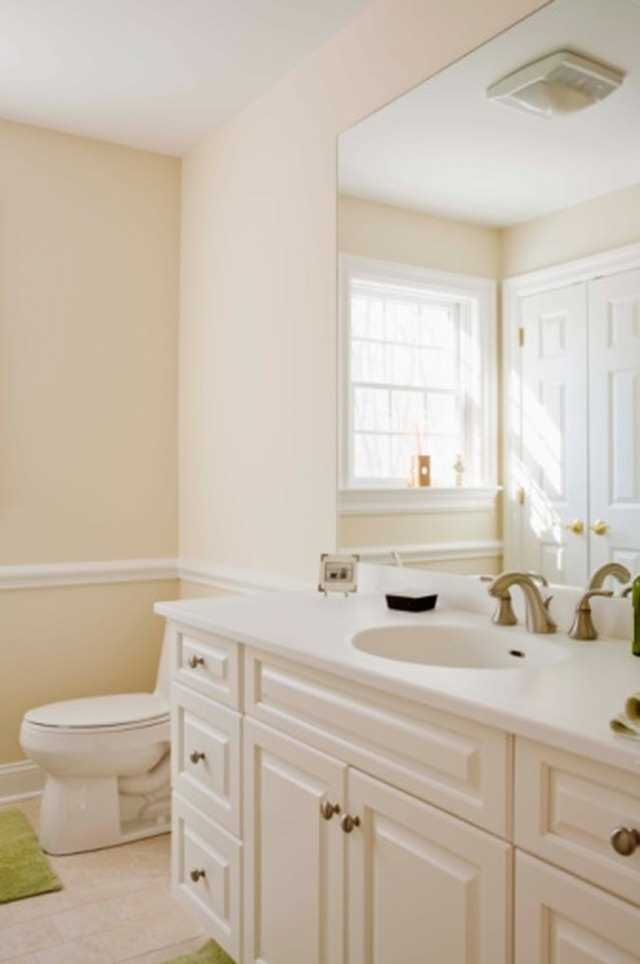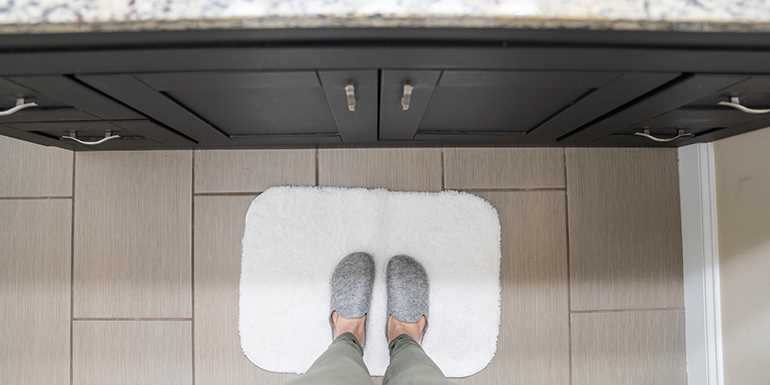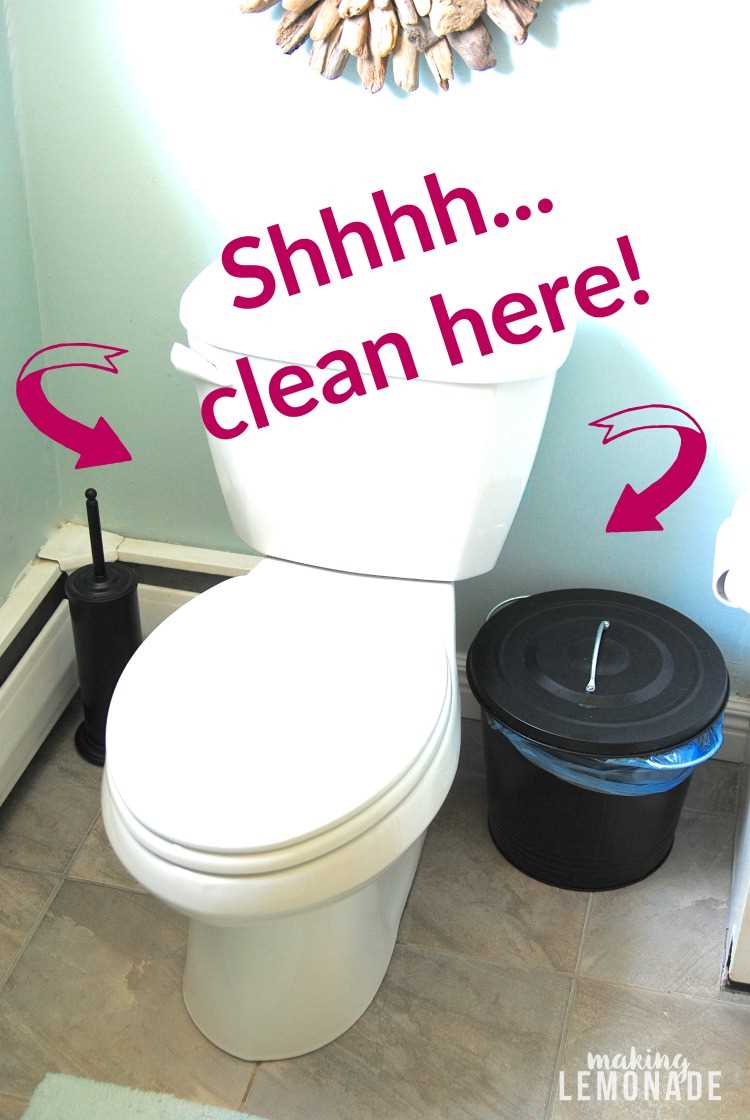




Have you ever walked into your bathroom and been greeted by a lingering unpleasant odor? It’s a common problem that many people experience, but understanding the reasons behind the persistent stagnant smell can help you find solutions to eliminate it.
One possible reason for the stagnant smell in the bathroom is the presence of mold or mildew. These fungal growths thrive in moist environments, making the bathroom an ideal breeding ground. Mold and mildew not only produce an unpleasant odor, but they can also cause various health issues, such as allergies and respiratory problems.
Another possible cause of the stagnant smell is a clogged or sluggish drain. Over time, debris like hair, soap scum, and other particles can build up in the pipes, creating a blockage that prevents proper drainage. This can lead to stagnant water in the drain, resulting in an unpleasant odor.
Additionally, inadequate ventilation in the bathroom can contribute to the stagnant smell. Without proper air circulation, moisture and odors are trapped, creating an unpleasant environment. This is especially true in bathrooms without windows or exhaust fans.
To tackle the persistent stagnant smell in the bathroom, it’s essential to address these underlying causes. Regular cleaning and maintenance can help prevent the growth of mold and mildew. Keeping drains clear of debris through regular cleaning or using drain cleaners can help ensure proper drainage. Installing ventilation options, such as exhaust fans or opening windows, can also help improve air circulation.
Remember, addressing the root causes of the stagnant smell will not only eliminate the unpleasant odor but also create a healthier and more pleasant bathroom environment for you and your family.
Common Causes
1. Poor ventilation: One of the most common reasons for a persistent stagnant smell in the bathroom is poor ventilation. If the bathroom does not have proper ventilation, the stagnant air can lead to a buildup of moisture and odors.
2. Mold and mildew: Another common cause of a stagnant smell in the bathroom is mold and mildew. These fungi thrive in moist environments and can release strong odors. Look for signs of mold and mildew, such as black spots on walls or ceilings, and address the issue promptly.
3. Clogged drains: Clogged drains can also contribute to a persistent stagnant smell in the bathroom. When drains are blocked, water and debris can accumulate, leading to unpleasant odors. Regularly clean and unclog drains to prevent this issue.
4. Dirty toilet: A dirty toilet can be a major source of bathroom odor. Make sure to regularly clean the toilet bowl, including under the rim, to eliminate any lingering smells.
5. Old or dirty shower curtains: Shower curtains can trap moisture and bacteria, leading to a stagnant smell. If your shower curtain is old or dirty, consider replacing it or washing it thoroughly.
6. Inadequate cleaning: If your bathroom is not cleaned regularly and thoroughly, odors can accumulate over time. Make sure to clean all surfaces, including floors, walls, and fixtures, to prevent any lingering smells.
7. Sewer gas leaks: In rare cases, a persistent stagnant smell in the bathroom may be caused by sewer gas leaks. If you suspect this is the case, it is best to contact a professional plumber to fix the issue.
Poor Ventilation

A common reason for persistent stagnant smell in the bathroom is poor ventilation. When a bathroom lacks proper ventilation, the moisture and odors remain trapped, creating an unpleasant and stale atmosphere.
Causes of Poor Ventilation:
- Blocked or inadequate vents: If the bathroom vents are blocked by dust, debris, or other obstructions, the air circulation is compromised, leading to poor ventilation.
- Inefficient exhaust fan: If the exhaust fan in the bathroom is not powerful enough or is not functioning properly, it may not be able to effectively remove the moisture and odors from the air.
- Lack of windows: Bathrooms without windows rely solely on artificial ventilation systems, such as exhaust fans, to circulate air. If these systems are not sufficient, the lack of natural ventilation can contribute to poor air quality and persistent odors.
Effects of Poor Ventilation:
Poor ventilation can have several negative effects on the bathroom:
- Increased moisture: Without proper air circulation, the moisture from showers, baths, and sinks can linger in the bathroom for longer periods. This can lead to the growth of mold, mildew, and bacteria, which contribute to unpleasant smells.
- Build-up of odors: The lack of fresh air flowing in can cause odors to become trapped and linger in the bathroom, creating a persistent stagnant smell.
- Poor air quality: Without proper ventilation, harmful particles and gases, such as carbon monoxide and volatile organic compounds (VOCs), can accumulate in the bathroom, leading to potential health risks.
Solutions for Poor Ventilation:
To address the issue of poor ventilation in the bathroom, the following solutions can be considered:
- Clean and maintain the vents: Regularly clean and remove any obstructions from the vents to ensure proper airflow.
- Upgrade the exhaust fan: If the current exhaust fan is inadequate, consider upgrading to a more powerful model that can effectively remove moisture and odors from the bathroom.
- Install a window or skylight: If possible, installing a window or skylight can provide natural ventilation and help improve air circulation in the bathroom.
- Use air purifiers or dehumidifiers: Air purifiers can help remove odors and improve air quality, while dehumidifiers can reduce excess moisture in the air. Both can be effective in combating poor ventilation.
- Keep the bathroom clean and dry: Regularly clean the bathroom and ensure proper drying of surfaces to prevent the growth of mold and mildew, which contribute to unpleasant smells.
By addressing the issue of poor ventilation in the bathroom, it is possible to eliminate the persistent stagnant smell and create a fresher and more pleasant environment.
Clogged Drains
A common cause of persistent stagnant smells in your bathroom can be clogged drains. Over time, drains can become blocked with hair, soap scum, and other debris, preventing proper water flow and causing unpleasant odours to build up. Here are a few factors to consider:
- Hair Build-Up: Hair is one of the main culprits when it comes to clogged drains. As it goes down the drain, it can get tangled and create a blockage, leading to a foul smell. Regularly cleaning the drain cover and using a hair catcher can help prevent this issue.
- Soap Scum: Soap scum is another common cause of clogged drains. Over time, soap residue can build up and create a sticky film inside the pipes, inhibiting water flow and causing smells. Regularly using drain cleaners or natural remedies like baking soda and vinegar can help break down the soap scum.
- Pipe Ventilation: Proper ventilation is crucial for maintaining good drainage in your bathroom. If your drain pipes are not properly vented, it can lead to slow drainage and stagnant smells. Consider checking your plumbing system to ensure proper ventilation is in place.
- Foreign Objects: Sometimes, objects accidentally fall down the drain and cause blockages. This can include things like dental floss, cotton swabs, or small toys. These objects can accumulate and cause foul odours. If you suspect a foreign object may be causing the smell, you may need to call a professional plumber for assistance.
In summary, clogged drains can be a significant cause of persistent stagnant smells in your bathroom. Regular maintenance and proper cleaning can help prevent clogs and keep your drains flowing smoothly.
Remedies
- Use an air freshener or odor eliminator: One of the easiest ways to combat a lingering bathroom smell is to use an air freshener or odor eliminator. Look for products specifically designed for bathrooms, as they often have stronger formulas to tackle the unwanted odors.
- Open the windows: Proper ventilation is crucial in getting rid of bathroom odors. Open the windows to let in fresh air and allow the stagnant smell to dissipate.
- Clean the bathroom regularly: Regular cleaning is essential to prevent and eliminate bathroom odors. Scrub the toilet, sink, and floors with cleaning products that have a fresh scent, and don’t forget to clean the grout and shower curtains, as they can harbor odors as well.
- Use baking soda: Baking soda is a natural deodorizer and can be used to absorb and neutralize odors in the bathroom. Sprinkle some baking soda in the toilet bowl, on the floor, or in the sink, and leave it overnight. The next day, simply sweep or vacuum it up.
- Check for plumbing issues: Sometimes, persistent bathroom odors can be a sign of underlying plumbing problems. Check for leaks, clogged drains, or any other issues that may be causing the smell. If necessary, contact a professional plumber to address the problem.
- Avoid moisture build-up: Excess moisture can contribute to the development of mold and mildew, which can cause unpleasant odors in the bathroom. Make sure the bathroom is properly ventilated during and after showers, and consider using a dehumidifier to reduce humidity levels.
- Replace old towels and bath mats: Old towels and bath mats can retain moisture and trap odors. Regularly wash and replace them to keep the bathroom smelling fresh.
- Use scented candles or essential oils: Adding pleasant scents to the bathroom can help mask any lingering odors. Light scented candles or use essential oil diffusers to create a more pleasant environment.
- Keep the bathroom dry: Wipe down surfaces, such as countertops and shower walls, after each use to prevent moisture buildup and eliminate potential sources of odors.
By following these remedies, you can effectively eliminate persistent stagnant smells in your bathroom and create a more pleasant and inviting space.
Air Fresheners

Air fresheners are a popular choice for combating persistent stagnant smells in the bathroom. They are designed to release pleasant scents into the air, masking any unpleasant odors. There are several types of air fresheners available, each with its own advantages and disadvantages.
1. Spray Air Fresheners
Spray air fresheners are one of the most common types found in bathrooms. They come in aerosol cans and can be sprayed directly into the air or onto surfaces such as fabric or curtains. Spray air fresheners provide instant results and are effective at quickly eliminating bad smells. However, they often contain chemicals that may be harmful if inhaled in large quantities.
2. Plug-in Air Fresheners
Plug-in air fresheners are another popular option. They consist of a device that is plugged into an electrical socket and releases fragrance into the air continuously or at regular intervals. Plug-in air fresheners are convenient and long-lasting, providing a constant freshness in the bathroom. However, they may be more expensive in the long run due to the need to purchase refill cartridges or plug-ins.
3. Gel Air Fresheners
Gel air fresheners are typically enclosed in a container or jar, with the gel releasing fragrance slowly over time. They are a cost-effective option and can provide a pleasant scent for several weeks. However, they may not be as effective at eliminating strong bathroom odors compared to other types of air fresheners.
4. Natural Air Fresheners
For those who prefer a more natural approach, there are also natural air fresheners available. These can include essential oil diffusers, sachets filled with natural ingredients, or potpourri. Natural air fresheners can provide a subtle and soothing scent in the bathroom, and they often have additional therapeutic benefits. However, they may not be as effective at eliminating strong odors as synthetic air fresheners.
5. Considerations when using air fresheners

When using air fresheners in the bathroom, it is important to consider the following:
- Ensure proper ventilation in the bathroom to prevent the buildup of stagnant smells.
- Choose air fresheners with scents that you enjoy and find pleasant, as some scents may be overpowering or irritating.
- Follow the instructions provided with the air freshener for safe and effective use.
- Be mindful of any allergies or sensitivities that you or your household members may have to certain ingredients in the air freshener.
- Regularly clean and maintain the air freshener device or container to prevent the growth of bacteria or mold.
By understanding the different types of air fresheners available and considering the specific needs of your bathroom, you can select the most suitable option for combating persistent stagnant smells and maintaining a fresh and pleasant environment.
Regular Cleaning

To prevent and eliminate persistent stagnant smells in the bathroom, it is important to establish a regular cleaning routine. By regularly cleaning your bathroom, you can remove any build-up of dirt, grime, and bacteria that may be causing the unpleasant smell.
Here are some tips for regular cleaning:
- 1. Clean surfaces: Wipe down all surfaces in the bathroom, including countertops, sinks, and toilets, with a disinfectant cleaner. Be sure to pay extra attention to areas that may collect moisture, such as corners and grout lines.
- 2. Scrub the shower and bathtub: Use a bathroom cleaner and scrub brush to clean the shower and bathtub. Don’t forget to clean the drain to remove any build-up of hair and soap scum.
- 3. Clean the toilet: Use a toilet bowl cleaner and brush to thoroughly clean the toilet bowl. Pay attention to the rim and under the rim, as these areas can collect bacteria and cause odors.
- 4. Wipe down fixtures: Use a damp cloth to wipe down faucets, handles, and other fixtures in the bathroom. This will help remove any fingerprints, water spots, or other dirt that may contribute to the smell.
- 5. Clean the floor: Sweep or vacuum the bathroom floor to remove any dirt, hair, or debris. Then, mop the floor with a disinfectant cleaner to ensure it is thoroughly clean.
By incorporating these cleaning tasks into your regular routine, you can help prevent stagnant smells in the bathroom. Remember to always use proper ventilation while cleaning to ensure the odors do not linger.
FAQ
Why does my bathroom have a persistent stagnant smell?
There could be several reasons why your bathroom has a persistent stagnant smell. One possibility is that there is a build-up of mold or mildew in the bathroom, which can cause a musty odor. Another possibility is that there is a clogged or backed-up drain in the bathroom, which can result in a foul smell. Additionally, poor ventilation in the bathroom can contribute to a stagnant smell by allowing odors to linger. It is important to identify the specific cause of the smell in order to effectively address and eliminate it.
How can I determine if there is a mold or mildew problem in my bathroom?
To determine if there is a mold or mildew problem in your bathroom, you can visually inspect areas where moisture tends to accumulate, such as around the shower, bathtub, or sink. Look for any signs of discoloration or black spots, as these can indicate the presence of mold or mildew. Additionally, if you notice a musty odor that is persistent, it may be a sign of mold or mildew. If you suspect a mold or mildew problem, it is important to address it promptly, as mold can pose health risks and can also damage surfaces in your bathroom.
What should I do if I have a clogged or backed-up drain in my bathroom?
If you have a clogged or backed-up drain in your bathroom, there are several steps you can take to address the issue. First, try using a plunger to dislodge the clog. If the plunger does not work, you can try using a drain snake to remove the blockage. Additionally, you can try using a mixture of baking soda and vinegar, followed by hot water, to break down the clog. If these methods do not work, it may be necessary to call a professional plumber to assist with the issue. It is important to address a clogged or backed-up drain promptly, as it can lead to unpleasant odors and potential water damage.
How can I improve ventilation in my bathroom to eliminate stagnant smells?
Improving ventilation in your bathroom can help eliminate stagnant smells. One way to do this is by installing a bathroom exhaust fan, which can help remove moisture and odors from the air. Make sure the fan is properly vented to the outside of your home. Additionally, you can open windows or doors in the bathroom to allow for fresh air circulation. If you have a window that doesn’t open, consider installing a venting window or a venting skylight. Keeping the bathroom clean and dry can also help improve ventilation and prevent odors from lingering. Regularly cleaning and disinfecting surfaces, as well as drying them thoroughly after use, can make a big difference in reducing stagnant smells in the bathroom.















